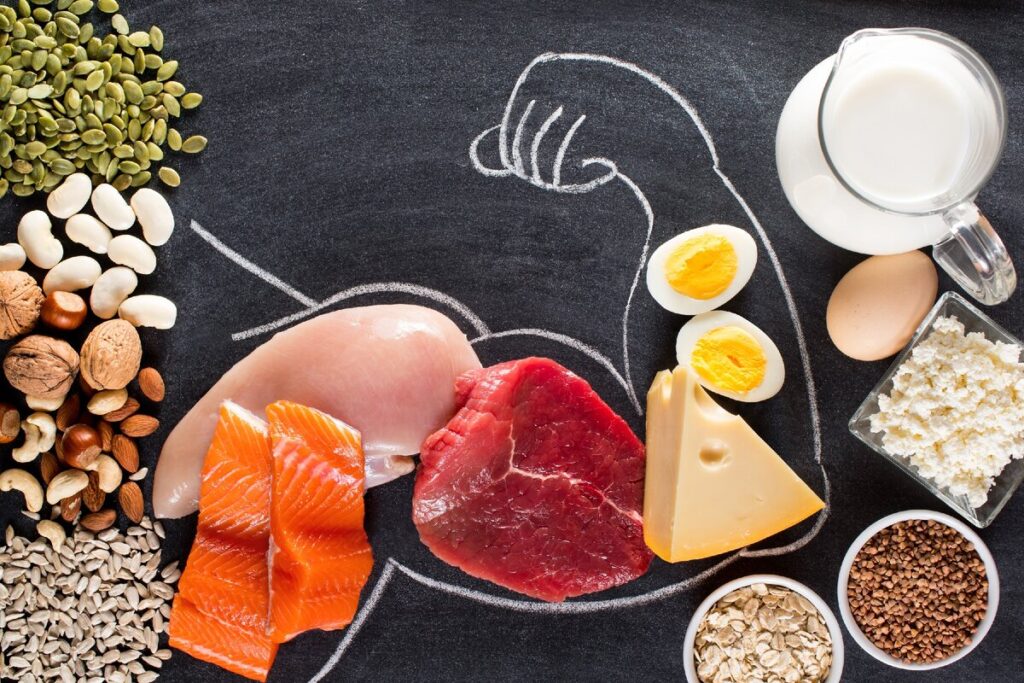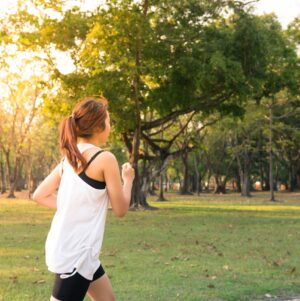There are many myths and misconceptions related to training and fitness. People often make mistakes in nutrition and weight loss, in training at the gym and in the recovery process.
In this article, I have compiled the top tips from experts and trainers that are worth knowing and remembering. These are facts and tips from sports trainers that you should keep in mind.
Every time you think about how to lose weight and lose weight, or how to build muscle, remember these.
9 worst fitness myths
Lose weight in certain parts of the body
Actually, wanting to lose weight in certain parts of the body is a fitness myth. And many people believe that they can choose where they want to lose weight, and that they can use certain exercises to burn fat in certain places.
However, the weight loss process is systemic, and fat burns evenly throughout the body.
Research shows that exercises that target specific parts of the body may strengthen the muscles in that area, but they will not burn fat in that particular location.
Instead, weight loss requires creating a calorie deficit by reducing the number of calories consumed and/or increasing the number of calories expended through physical activity.
When a caloric deficit is achieved, fat begins to burn throughout the body, including the areas where you want to lose weight.
Thus, to lose weight in specific parts of the body, you need to follow general weight loss principles such as reducing calories and increasing physical activity.
Also, you need to realize that each person has a unique body structure and it may take longer for fat stores to go away from some areas of the body.

You will over-pump if you go to the gym.
The myth that going to the gym will automatically lead to muscle over-pumping is not true based on research.
In fact, muscle pumping is the result of a long and hard training process that includes not only exercise, but also proper nutrition, regular training, good sleep, etc.
In addition, muscle pumping depends on individual factors such as genetics, age, gender, hormone levels, etc.
Studies show that to pump muscles, you need to put some stress on the muscles by exercising at a high intensity and volume. However, simply going to the gym does not guarantee the creation of such stress.
On top of everything else, many people, especially women, are afraid that training with heavy weights will lead to muscle overload and increased body volume.
In fact, studies show that it is nearly impossible for women to do this because of their hormonal background and the light weights in the exercises they most often use in workouts. But to strengthen and tone muscles, women can.
Thus, going to the gym itself is not a guarantee of muscle pumping.
If you went to the gym, it means you will lose weight right away.
While working out at the gym can help you lose weight, it is not a 100% guarantee of weight loss. In fact, weight loss is mostly dependent on your diet and overall physical activity level, not whether or not you go to the gym.
Scientific studies show that weight loss occurs as a result of creating a calorie deficit in the body. This means that you must burn more calories than you consume each day in order for the body to start using fat stores as an energy source. In addition, the quality and quantity of food you consume also plays an important role in weight loss.
While working out at the gym can help you burn some calories while you exercise, it cannot compensate for poor quality food and high calorie intake. For example, if you work out at the gym but consume large amounts of calorie-dense food such as fast food or sweets, you won’t be able to lose weight.
And also working out at the gym can lead to increased muscle mass, which can lead to weight gain. This is because muscle weighs more than fat, so while you can lose fat, you can also gain weight in muscle.

The morning is the best time to workout.
A morning workout can be an effective way to start your day, but it’s not always the best time to workout for everyone. Here are a few reasons why mornings may not always be the best time to workout.
- Low energy levels: energy levels may be lower in the morning than at other times of the day. This is because your body doesn’t get energy from food while you sleep, and because levels of the hormone cortisol, which affects energy levels, may be higher in the morning.
- Not enough time to warm up: a morning workout may require additional warm-up time to prepare your body for exercise. If you have a limited amount of time, a morning workout may not be the best choice.
- Risk of injury: muscles and ligaments may be less flexible and more prone to injury in the morning.
- Individual preferences: each person has a unique circadian rhythm that determines when they feel most energized and ready to exercise.
Some people may prefer to exercise in the evening or afternoon when they have higher energy levels and can exercise more efficiently.
- Busyness: a morning workout can be difficult for those who have to go to work early or take care of children. In such cases, you can choose a different time to workout so as not to disrupt your schedule.
In general, choosing a time to workout depends on each person’s individual needs and preferences. It is important to consider one’s energy level, availability of time to warm up, individual preferences and busyness.
Sports nutrition and supplements are a must if you have gone to the gym.
Sports nutrition and supplements are not mandatory to start working out at the gym. They can help you improve your results and reach your goals faster, but they are not necessary to start working out.
The main factor in achieving workout results is proper nutrition and regular workouts. You need to consume enough protein, carbohydrates and fats to provide your body with energy for workouts and recovery afterward. Proper nutrition will also help improve your skin, hair, nails and overall health.
If you want to improve your results and reach your goals faster, you can consider supplements and sports nutrition, but remember that they are no substitute for proper nutrition and regular workouts. It is important to choose quality products and not to exceed the recommended dosage to avoid possible side effects.
Please note that this article is for informational purposes only and is not a call to action.
Do not self-medicate, as it can harm you and always consult a specialist about your health!
You should eat plenty of protein.
Although protein is an important nutrient for muscle tissue growth and repair, eating too much protein can have negative health consequences.
The first negative consequence is overloading the kidneys. When consuming large amounts of protein, the kidneys have to process and excrete large amounts of nitrogen, which can result in increased work for them.
In addition, excessive protein intake can lead to nutrient imbalances in the body. If you consume too much protein, you are likely to be deficient in carbohydrates and fats, which are also important for providing the body with energy and proper function.
It is also important to remember that every body is different and the optimal protein intake can vary depending on physical activity, age, gender and other factors.
Therefore, it is recommended that you consult a professional who can help you determine the optimal protein intake for you based on your goals and needs.

To lose weight, you need to eat often and in small portions.
Eating small meals frequently can help in controlling appetite and reducing calorie intake, but it is not the only way to lose weight.
In order to lose weight, you need to create a calorie deficit, which means consuming fewer calories than are expended throughout the day. This can be achieved in a variety of ways, including reducing the amount of food you eat, increasing physical activity, or a combination of both.
However, many people who eat smaller meals may feel hungry and want to snack more and more.
Instead, it is recommended that you focus on the quality of the food you eat and reduce the number of calories consumed from high-calorie and processed foods. It is also important to consume enough protein to preserve muscle mass during the weight loss process.
Again, it is best to consult a professional to help determine the optimal number of calories for you based on your goals and needs.
Pain is an indicator of progress.
Research shows that post-exercise muscle soreness (DOMS) is not necessarily an indicator of exercise progress.
DOMS (Delayed Onset Muscle Soreness) is a painful delayed onset muscle soreness syndrome that can manifest as soreness and a feeling of stiffness in the muscles after intense exercise or other physical activity. DOMS usually begins 24-48 hours after exercise and can last up to several days.
DOMS is usually caused by microtrauma or damage in the muscles that occurs as a result of increased exercise or new types of physical activity. These microtraumas lead to inflammation in the muscles, which causes pain and stiffness.
DOMS is not an indicator of training progress because its presence does not always mean that muscles are growing or recovering. However, DOMS can indicate that the muscles have received a sufficient workload and need time to recover and grow.
For example, one study conducted in 2013 found that high-intensity exercise can lead to severe DOMS, but does not necessarily lead to increased muscle mass or strength.
Additionally, another study in 2019 found that some people may have a high tolerance to DOMS, meaning they may experience less pain after exercise but still get significant gains from their workouts.
It’s also important to keep in mind that DOMS can be caused not only by strenuous exercise, but also by other factors such as not taking enough breaks between workouts, overexertion, or improper exercise technique.
Thus, it is important not to focus only on the presence or absence of pain after workouts, but to monitor your results, such as progress in muscle mass or strength gains, and to consider other factors such as exercise technique and breaks between workouts to achieve the desired results.
If you want a flat belly, you should definitely pump your abs.
While pumping your abs can help strengthen your abdominal muscles and make them more prominent, it is not a prerequisite for achieving a flat tummy.
In fact, body fat percentage plays a major role in the formation of a flat tummy. In order to have a flat tummy, you need to reduce your body fat percentage, which can be achieved by creating a calorie deficit, increasing physical activity and eating right.
In addition, it is important to consider your individual body and the degree of fatty tissue in your belly area. If you have a high percentage of fat in this area, it may take you more time and effort to achieve a flat tummy.


